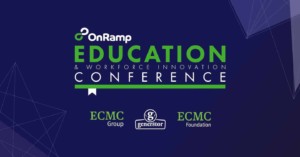Investing in Innovation
In the long run, it’s all about innovation—that’s true for our economy and our schools. Tom Friedman makes the case for innovation investment in addition to the bailouts:
“You want to spend $20 billion of taxpayer money creating jobs? Fine. Call up the top 20 venture capital firms in America, which are short of cash today because their partners — university endowments and pension funds — are tapped out, and make them this offer: The U.S. Treasury will give you each up to $1 billion to fund the best venture capital ideas that have come your way. If they go bust, we all lose. If any of them turns out to be the next Microsoft or Intel, taxpayers will give you 20 percent of the investors’ upside and keep 80 percent for themselves.”
Freidman accurately summarizes how the crash and credit squeeze has dampened venture investment at a time when we could most use more start up companies. While the economy is in transition, we need more people learning—finishing degrees, industry certificates, and mastering new skills—and more people earning wages in jobs that replace the millions lost in the last six months.
Leadership and investment will fuel the shift from a bureaucratic print-centric batch processing education model to an entrepreneurial system based on personal digital learning. The transition holds the promise of improved learning, staffing and facilities productivity—young people worldwide will learn more, faster, and cheaper.
A New York Times editorial highlights the portion of the stimulus aimed at education innovation:
“Mr. Duncan has also been given authority over a $5 billion grant program called the “Race to the Top Fund,” designed to encourage innovation. The secretary can set a new tone by rewarding states that work hard for reform and bypassing states that do not.”
In addition to rewarding innovative states, Duncan should co-invest with private venture funds to support a new generation of innovative learning tools and formats. That’s an investment that would pay off—short and long term.





0 Comments
Leave a Comment
Your email address will not be published. All fields are required.